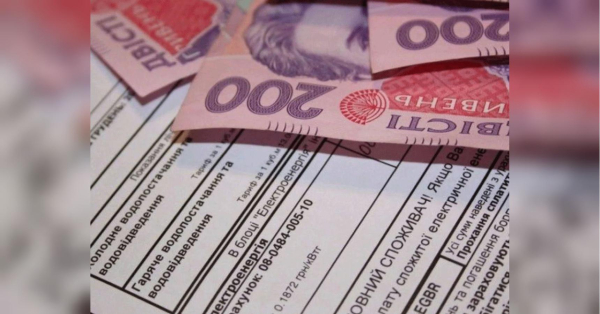
It seems that Ukrainian officials have found a way to circumvent various “moratoriums,” “bans,” and other prohibitions on raising prices for consumers. And they want to do this not under the guise of equalizing prices, as the NBU proposed, but under the pretext of “modernization.”
VIDEO OF THE DAY
In particular, the Cabinet of Ministers wants to modernize the district heating system. The corresponding proposal is contained in draft law No. 14067, which the government submitted to the Verkhovna Rada, writes “Minfin”. The document, in particular, introduces a norm on the mandatory installation of individual heating points (ITP) in all high-rise buildings, writes “Minfin”.
As reported by the Ministry of Regional Development (it was this department that developed the aforementioned bill), ITPs will become mandatory for all buildings that are currently connected to centralized heating. In addition to corporate offices and budget organizations, this category also includes high-rise buildings. Some of them already have individual heating points, but, according to Popenko, no more than 3% of buildings in Ukraine have ITPs.
An individual heating point is an automated complex that is installed directly in the house and regulates the supply of hot water and heating only for it.
On the one hand, for residents of apartment buildings, the presence of ITP is a big plus. First, you can adjust the temperature of the coolant and set the selected parameters (say, to have 24 degrees Celsius in the apartments). That is, for example, if the weather is warm, you can immediately “turn on” the heating and not overheat the house.
ADVERTISING
Secondly, it is realistic to save on heating. “In the case of centralized heating, the supplier “writes off” all losses in the network to consumers, and they can reach 30. If there is an ITP in the house, this will not happen, because the heat is produced on site,” explains Yuriy Korolchuk, an analyst at the Institute for Strategic Studies.
According to Oleg Popenko, the savings can be quite significant. “Payments can be reduced by 40−45% or even more. If consumers currently pay an average of 40−45 hryvnias per square meter of heated area, then with ITP it is realistic to reach the figures of 20−25 hryvnias per square meter,” Popenko calculated.
But, according to Korolchuk, achieving maximum savings is possible only if the installation of ITP is carried out in parallel with the modernization of heating networks and boiler houses, and this is not yet discussed.
ADVERTISING
In any case, there will be savings on heating. According to Dushenka, within 15−20%. That is, if currently heating an average two-room apartment costs about 2 thousand hryvnias per month, then with ITP it can be 300−400 hryvnias cheaper.
The Ministry of Development also states that ITPs will allow people to receive better quality services and pay less, and the department presents the installation of individual heating as “a key element of the modernization of the centralized heating system.”
But since the utility companies do not have money for innovations, they plan to install them by increasing tariffs, that is, at the expense of consumers. This was hinted at by the head of the Teplovik utility company, Oleksandr Dushenko.
After all, these projects are quite expensive. “Depending on the building and type of equipment, one ITP can cost 300-700 thousand hryvnias or more. At the same time, according to preliminary calculations, the average payback for a 9-story building is 3-5 years, and, for example, for 2-4-story buildings – 15-30 years,” the specialist believes.
ADVERTISING
That is, an increase in tariffs cannot be avoided. In addition, in addition to heating, payments for other utility services may also change. “Starting next year, most likely, water, electricity and gas will become more expensive for the population. And fees for house maintenance and garbage collection are already increasing in many cities,” said Oleg Popenko, head of the Union of Consumers of Utilities.
On the other hand, it is unclear when exactly Ukrainians will be able to save on heating, and whether, on the contrary, they will have to pay increased fees before that.
After all, Ukraine is currently under a moratorium on raising heating and hot water tariffs. According to current legislation, it will be lifted no earlier than six months after the end of martial law.
How this conflict will be resolved if ITPs appear en masse before the end of the war is still unclear.
In addition to heating and hot water, gas distribution services are also affected by the moratorium on tariff increases. As for gas and cold water, there are no official prohibitions on revising tariffs for them. Although, as experts say, in this case there are “unspoken restrictions.”
For example, the NERC tried to approve increased tariffs for water utilities after the war began, but after the President's intervention, this decision was postponed. At the same time, small water utilities, whose tariffs are regulated at the local level, were already approved for increases during the war.
The water utilities themselves say that tariffs for the population in most cities have long been unprofitable, because in recent years the price of electricity, reagents, repairs, and other expense items has increased significantly.
Korolchuk does not rule out that the topic of increasing tariffs for cold water may be raised by the end of this year, and the price tags themselves may increase by at least 30%.
As for gas, according to Korolchuk, there are currently no economic grounds for revising the tariff for the population (about 8 hryvnias per cubic meter), since Naftogaz buys Ukrainian-produced gas from Ukrgazvydobuvannya for 7 hryvnias per cubic meter.
That is, people are actually offered a model: first you pay more for modernization, then, perhaps, you will pay less. When exactly this “later” will come depends on the timing of the establishment of the ITP and the lifting of the moratorium on tariff increases, which is in effect until the end of martial law. No one has yet clearly explained how exactly tariffs will be increased under the current moratorium.
Let us remind you that in some cases, utility debts can be written off.






